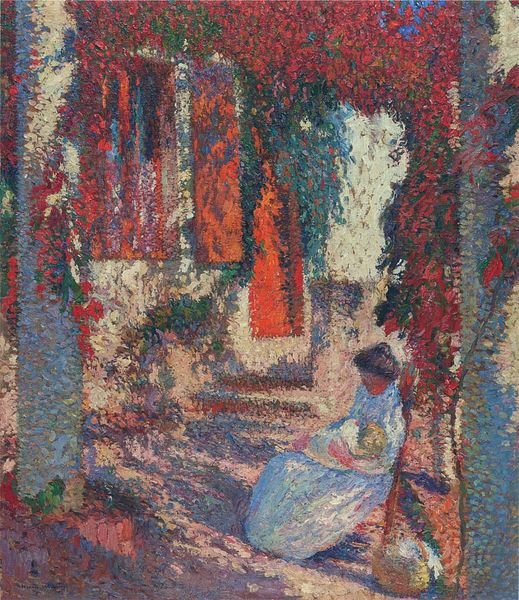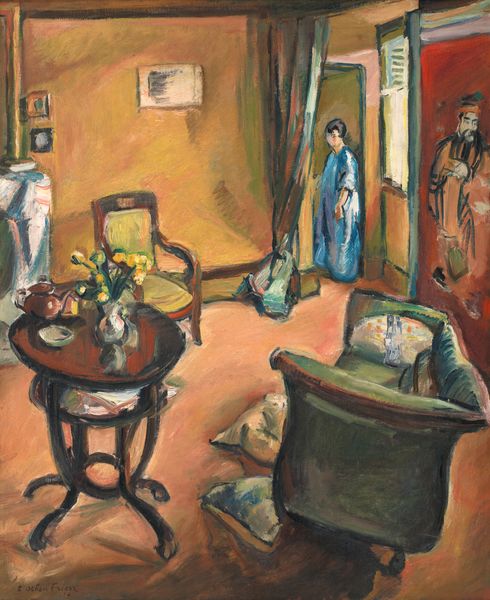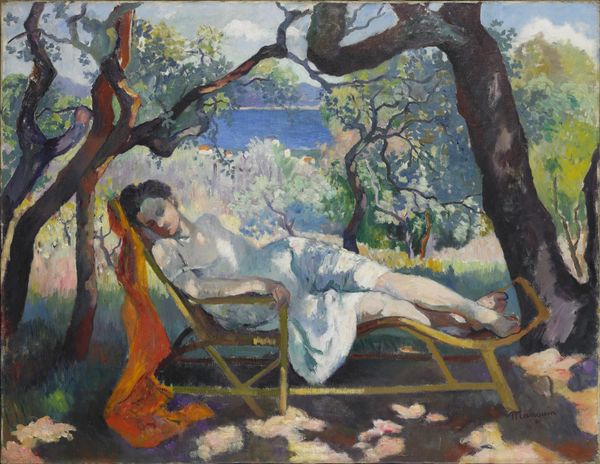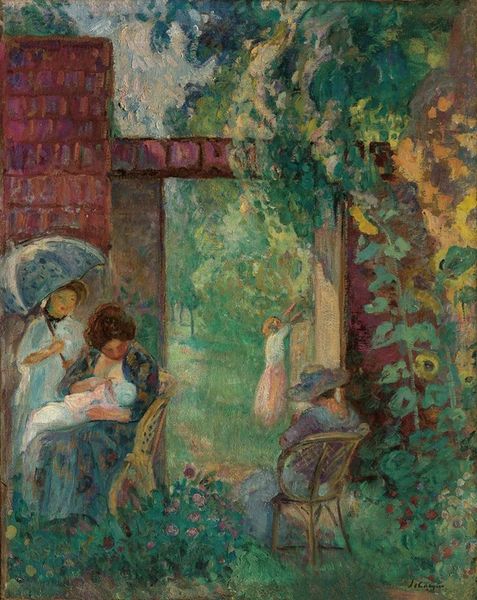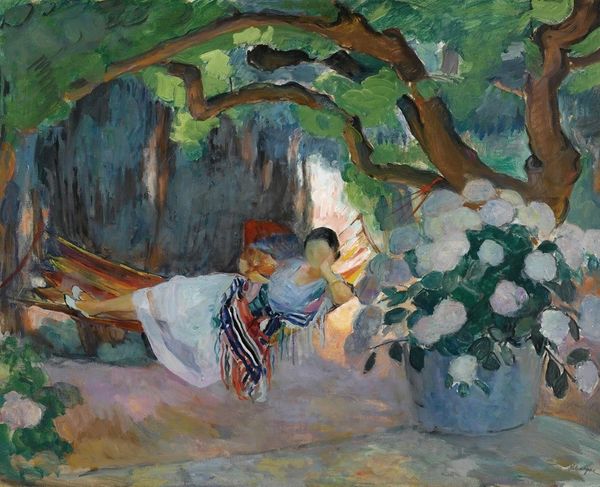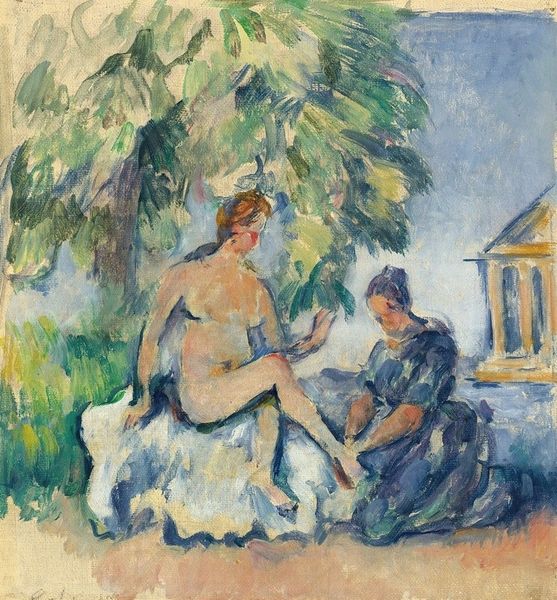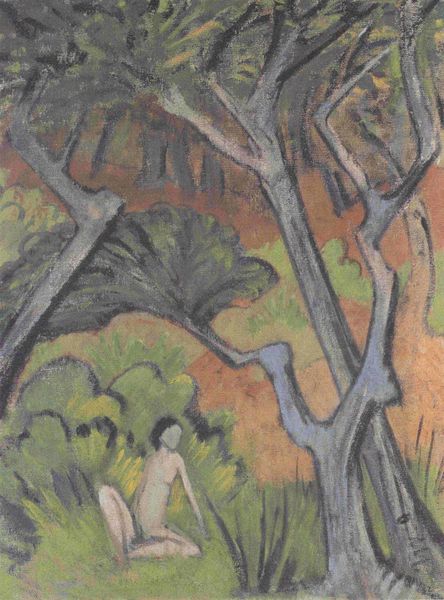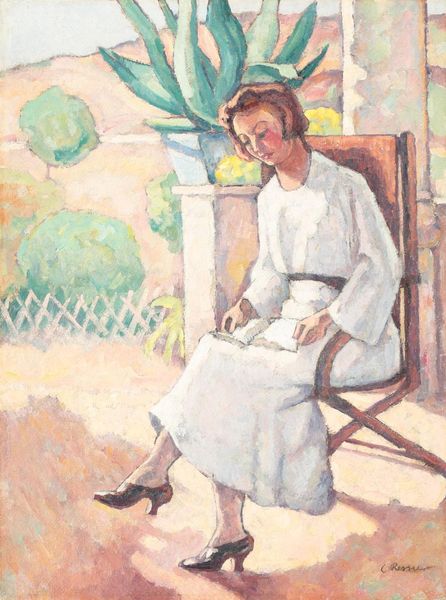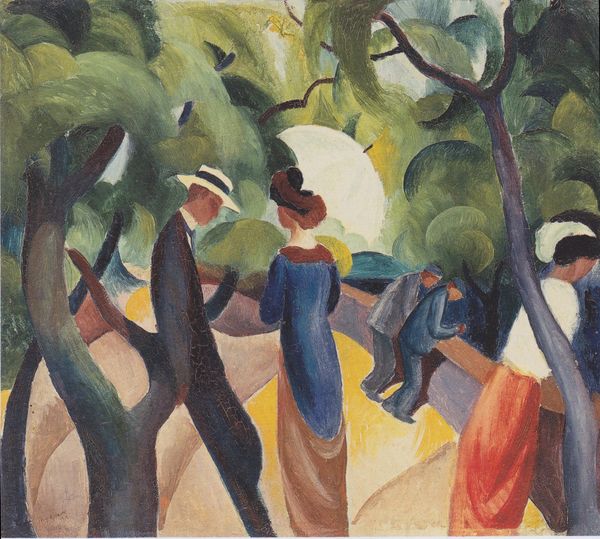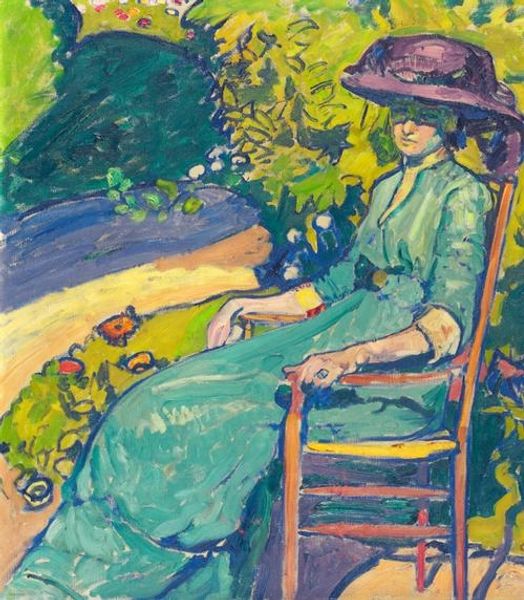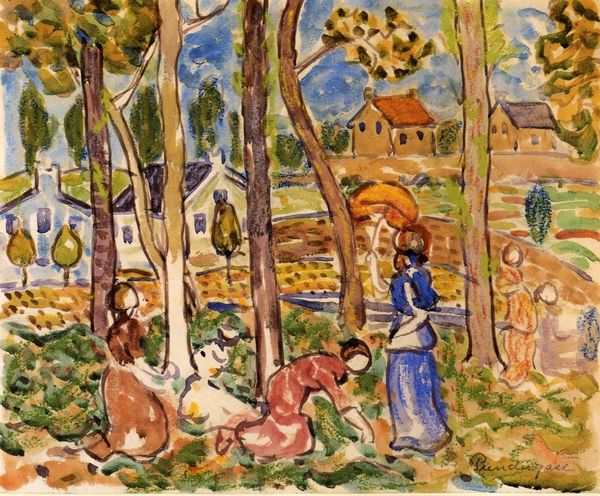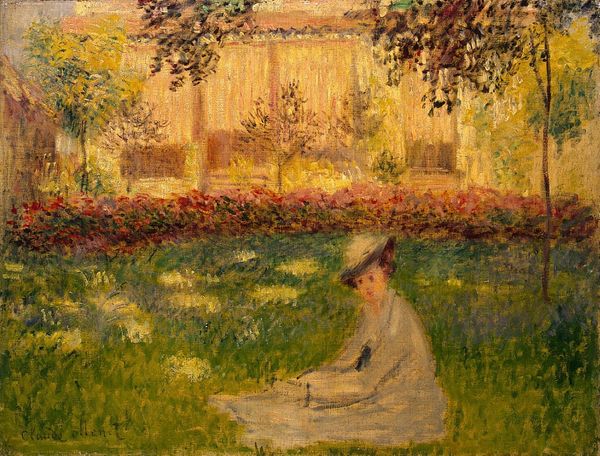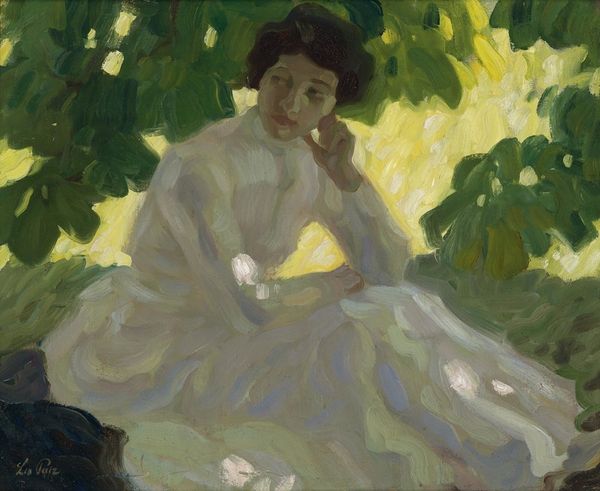
Dimensions: 75.8 cm (height) x 91.2 cm (width) x 7 cm (depth) (Brutto), 65 cm (height) x 81 cm (width) (Netto)
Editor: Here we have Othon Friesz’s “The Lady on the Terrace,” painted in 1914. It’s an oil on canvas and has quite a post-impressionistic feel. I'm really drawn to the woman's stillness amidst the vibrancy of the terrace. How do you interpret the symbolism within this garden scene? Curator: This image offers an intimate peek into a bygone era, saturated with both tranquility and subtle unease, knowing that 1914 marked the beginning of World War I. Does the composition of the leafy, overarching tree, shielding the seated woman, strike you as protective or confining? Editor: I hadn’t considered that duality, actually. Initially, I perceived it as purely sheltering. Now, the tree’s presence feels a little more… ambiguous. Like it’s both a haven and a boundary. Curator: Precisely. Consider the parasol, carefully furled beside the woman. It implies a readiness for a change in environment, for social encounters, and the artifice that might accompany those encounters. This suggests more than a snapshot of a restful afternoon; rather, it reflects the lady's state of mind at a key historical moment. The objects function almost as symbols for the coming disruption, where peace could change abruptly into war. Editor: That's fascinating. I didn't connect the umbrella with this upcoming turbulence, or even social 'performance,' yet it’s obvious now you mention it! It definitely prompts one to think about individual stories overshadowed by collective historical movements. Curator: This interplay— the personal versus the historical— that's where Friesz succeeds. It reminds us that even in the seemingly innocuous, potent cultural memories can reside. Are there any colours or figures that particularly strike you? Editor: The woman's hat. While it feels formal and perhaps indicates a higher class, it also draws my eye straight to her face and expression. There is a feeling of serenity to this otherwise busy setting. I learned to consider objects as signifiers and carriers of memories from looking at this artwork. Curator: Yes, absolutely, the smallest adornments communicate entire histories, which continue resonating throughout the history of time.
Comments
No comments
Be the first to comment and join the conversation on the ultimate creative platform.
